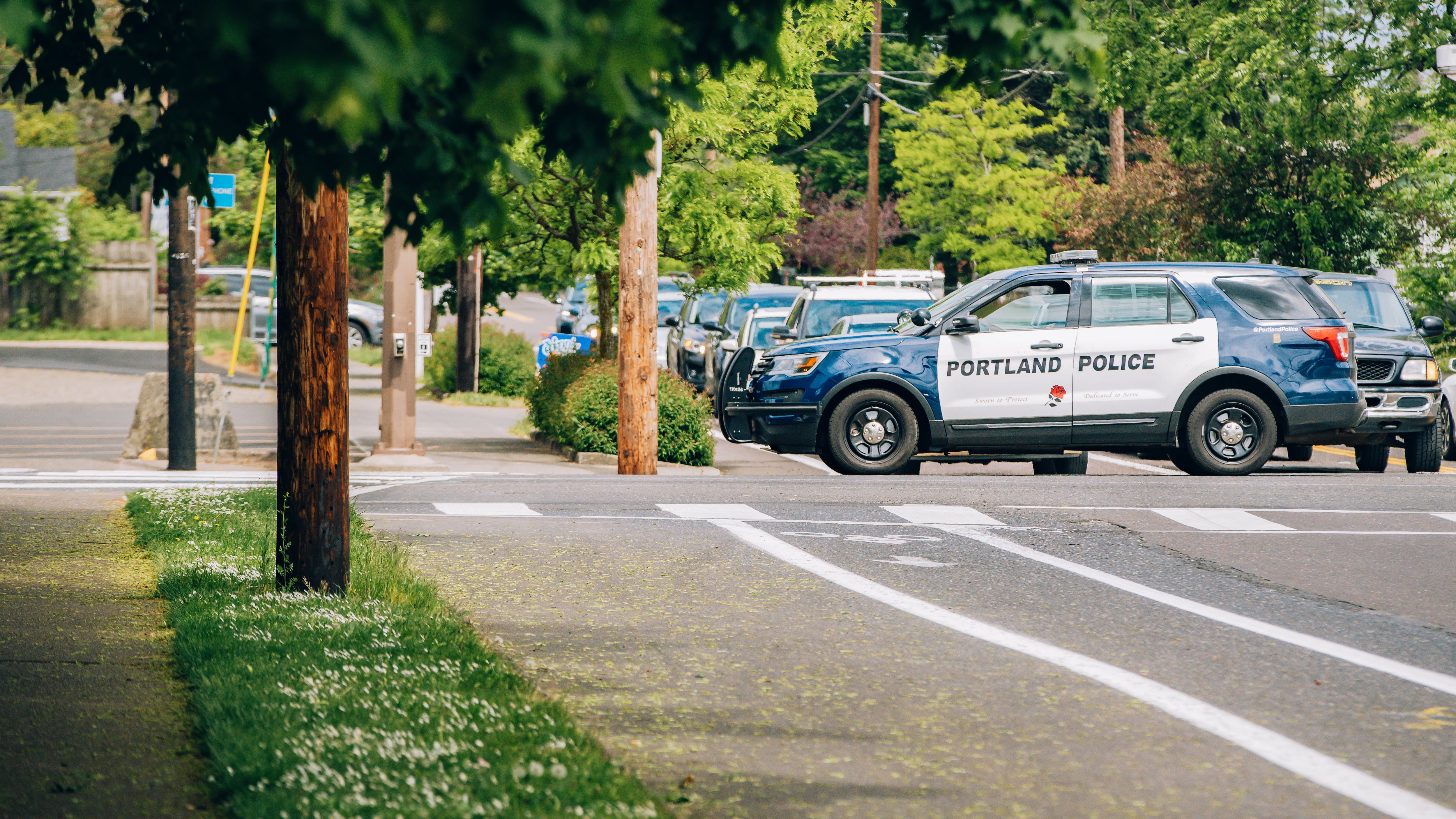For two decades, the Portland Police Bureau has armed its officers with AR-15 semi-automatic rifles, the result of a tough-on-crime policy that equipped officers with firearms most people associate more with mass shootings than community policing.
In response to a records request from WW, the bureau revealed last week that it owns 238 Colt AR-15 rifles.
Today, 168 Portland police officers—about 20% of the force—are trained to operate the semi-automatic weapon, which allows for greater accuracy and the ability to shoot with precision from upward of 100 yards, or about a city block away.
That means AR-15 rifle operators outnumber the 146 Portland officers who are certified to respond to mental health crises through the Enhanced Crisis Intervention Team—established following the city’s settlement with the U.S. Department of Justice. (Both certifications are voluntary, though ECIT certification requires 20 fewer hours of training than AR-15 certification. Some officers are trained in both.)
Portland patrol officers who get certification carry AR-15 rifles in their squad cars, stored in a locked case known as a “clam shell.” In other words, every time the city dispatches a beat cop to an incident, it’s rolling the dice that the officer responding may be packing military-grade firepower.
The event that prompted Portland patrol officers to carry these weapons dates back to a 1997 bank robbery that happened nearly 1,000 miles away, in Los Angeles.
During the “North Hollywood Shootout,” as it’s known, a pair of armor-clad bank robbers unloaded seemingly endless rounds of ammunition using high-powered rifles. A swarm of Los Angeles Police Department officers struggled to overtake the gunmen as they waited for a SWAT team to eventually arrive. By the end of the ordeal, both robbers were shot dead. Twelve officers were injured.
The shootout prompted police departments nationwide to beef up their arsenals.
Michael Gennaco, the former chief attorney of the Office of Independent Review for Los Angeles County who helped found OIR Group, which compiles reports on officer-involved shootings in Portland, recalls the shootout, which he says was “like Halley’s comet: One incident can result in an overreaction.”
“It was an effective marketing tool by those who sell AR-15s,” Gennaco says.
In 1997, then-Portland Police Chief Charles Moose formed the “Long Gun Option Committee,” police archives show. (A few years later, Moose went on to serve as the police chief in Montgomery County, Md., where he led the manhunt to apprehend the “D.C. Snipers” in 2002.)
In 1998, Moose asked the City Council for $310,000 to purchase 166 AR-15 .223-caliber semi-automatic rifles, according to news reports from the time. The Oregonian’s editorial board advocated for them, too.
“More and more police departments across the country are adding powerful semi-automatic rifles to their arsenals. Portland should be among them,” the paper wrote in February 1998. “In trained hands, rifles are highly accurate, easier to use and safer than shotguns. An AR-15 rifle, for example, can hit a dinner plate five blocks away. A handgun is reliable up to only about 25 yards.”
In 1999, the bureau purchased 225 AR-15 rifles. By 2004, PPB had trained 149 officers to operate them.
To date, PPB has used AR-15 rifles in about a dozen fatal shootings, including the January 2010 death of Aaron Campbell, a Black man who was unarmed when Officer Ron Frashour shot him in the back. That shooting also prompted then-Chief Rosie Sizer to convene an AR-15 review level committee.
The committee recommended “significant changes” to AR-15 training, according to the OIR Group’s 2012 report, authored by Gennaco and two others. At that time, and still today, a Portland police officer must volunteer and apply to become an AR-15 operator.
But in 2011, the committee implemented a more expansive review of applicants’ use-of-force histories and training records, according to the OIR report. It also required a recommendation from an officer’s supervisor, which is still the practice today, and increased the training hours required to what they are now: a 60-hour certification course and mandatory in-service training.
Officer Andrew Hearst had that training.
On Feb. 9, 2017, Hearst was resolving a parking dispute in the Lents neighborhood when he heard a sergeant on the police radio send out a call for an officer certified to use an AR-15. The reason? An armed robber was on the run in East Portland.
Hearst heard the sergeant repeat his request for a rifle about five minutes later.
“‘Are they still looking for a rifle?’” he recalled thinking. “I was surprised that we hadn’t found one yet.”
Soon after, Hearst fatally shot 17-year-old Quanice Hayes, who was Black. Police found a replica gun 2 feet from his body. One month later, Hearst was called before a Multnomah County grand jury to defend his actions.
His testimony about what happened that February morning provides a window into what police officers are trained to do when they’re told someone has a weapon.
His explanation is especially relevant to the Robert Delgado case because his choices led to the same result: an officer equipped with an AR-15 rifle shot someone carrying a fake gun.
As Hearst approached the scene, he removed his gun from its locked rack in his patrol car and loaded a round into the chamber, according to grand jury transcripts. He had received descriptions of the suspect and the pattern on the alleged weapon: a desert camo frame with a black slide.
Hearst’s designated role was to provide “lethal cover.” Per bureau policy, when an AR-15 operator is called to a scene, “their primary responsibility would be to use deadly force if it was needed,” Sgt. Derrick Foxworth Jr. testified in 2017.
Hearst soon found himself within 15 feet of Hayes. “There was no doubt in my mind the person that I was looking at had a gun,” he later told grand jurors. As Hayes sat on his knees with raised arms, Hearst fired three deadly shots. Hearst claimed he saw Hayes reaching for his waistband.
“Because you carry the AR-15, did you believe any other officers were in a position to use deadly force at that time, or did you believe that was your responsibility?” Multnomah County prosecutor Don Rees asked.
“I believed it was my responsibility,” Hearst responded. “I don’t know of any other rifles present or any other pistols out that could provide that type of cover.”
“To be clear, you didn’t see, as I understand your testimony, you did not actually see a gun in his hand at the time that you pulled the trigger in your rifle; is that correct?” Rees asked.
“That’s correct,” Hearst responded. “I did not see.”
Rees asked: Why not wait until you see a gun pointed at you before firing your weapon?
“I can’t wait,” Hearst answered. “Because if I let him get his hand on his gun, he will be able to pull that gun out and shoot me or my co-workers before I’m able to react to it.”
The grand jury declined to charge Hearst. This March, four years after Hearst killed Hayes, the city awarded the Hayes family $2.1 million in a wrongful death lawsuit.
Cover story: How often do Portland cops respond to incorrect 911 calls about a weapon? The city doesn’t know.

